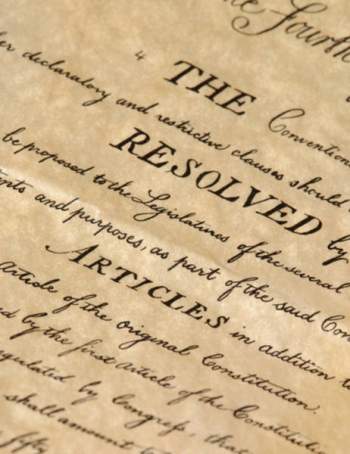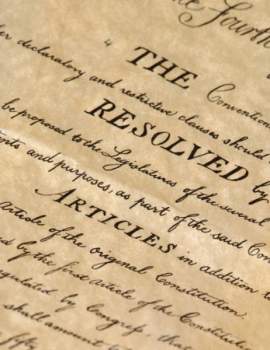
Knowing the Constitution Function

Popular In Constitution
Purpose Of Lifetime Appointment And Pros And Cons Enumerated Powers Bicameral Legislature Background Article 3 Of The Constitution We The People 1st Amendment Who Wrote The Constitution Judicial Review Equal Protection Clause Three Fifths Compromise 10th Amendment 5th Amendment
The place of the United States Constitution owes its existence in part to the precedent of previous forms of Constitutional law created throughout human history. In this sense, a constitution may be essentially considered a statement giving the basic shape of a political structure for organizing multiple numbers of people, as pertains to the powers it can exercise and those it cannot.
The constitution concept can be and has been used for different kinds of organizations, but the use most associated with the term is that comprising the overall political organization of a nation. Toward this end, a constitution will refer to both the abstract political principles cited as justifications for the exercise of power, as the United States Constitution refers to basic human liberties, and to specific procedures and forms for achieving these ideals.
The first constitution which can be understood as such is currently dated back to the year 2300 BCE based on evidence uncovered by an Iraqi archaeological dig. The first Roman constitution was created in 449 BCE, as the so-called Twelve Tables. It was only completely replaced many centuries later by the Code of Theodore in 438 BCE. In 621, the first constitution of Athens was created by a clerk named Draco, to be replaced in 594 by the less restrictive, or "draconian", Solonian Constitution. In a further move toward liberalization of Athenian law, the ruler Cleisthenes had a new law created in 508 BCE inaugurating democracy.
After constitutions spread across the governments of Greek city-states in the next few centuries, the philosopher Aristotle addressed their use and theory in his writing. Following the collapse of Roman imperial power in Europe, many of the Romans' former subjects created their own codes of law. In the Middle East, the Constitution of Medina was created in 1622 by the prophet Muhammad. An early Asian constitution was created in 1604 as the "Seventeen-article constitution" of Japan.
The first equivalent to the European conception of the constitution was implemented in North America, though not in written form, around the 11th and 12th centuries for the use of the Iroquois Nation. North America's first "true" constitution in the sense of fully satisfying Europe's requirements was implemented in 1639 as the Fundamental Orders of the Colony of Connecticut. The earliest constitution to satisfy modern understandings of the term was created but never implemented in the Agreements and Constitutions of Laws and Freedoms of the Zaporizian Host in 1710 for a small republic that never came to pass.
The oldest constitution which still exists today is the Leges Statutae Republicae Sancti Marini, created for San Marino in 1600. The rights expected to be secured by a modern constitution were created in part by the English Magna Carta, although, except for brief intervals, the country went without a formal constitution. The modern model for what a constitution should accomplish comes from the Constitution of the United States, which influenced many of the subsequent reforms and revolutions in Europe.
NEXT: What Is The FDR Court-Packing Plan




















